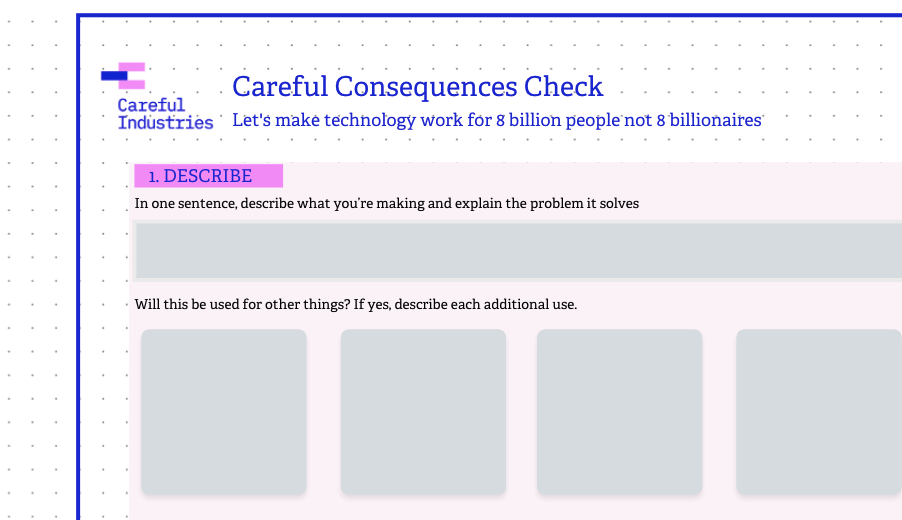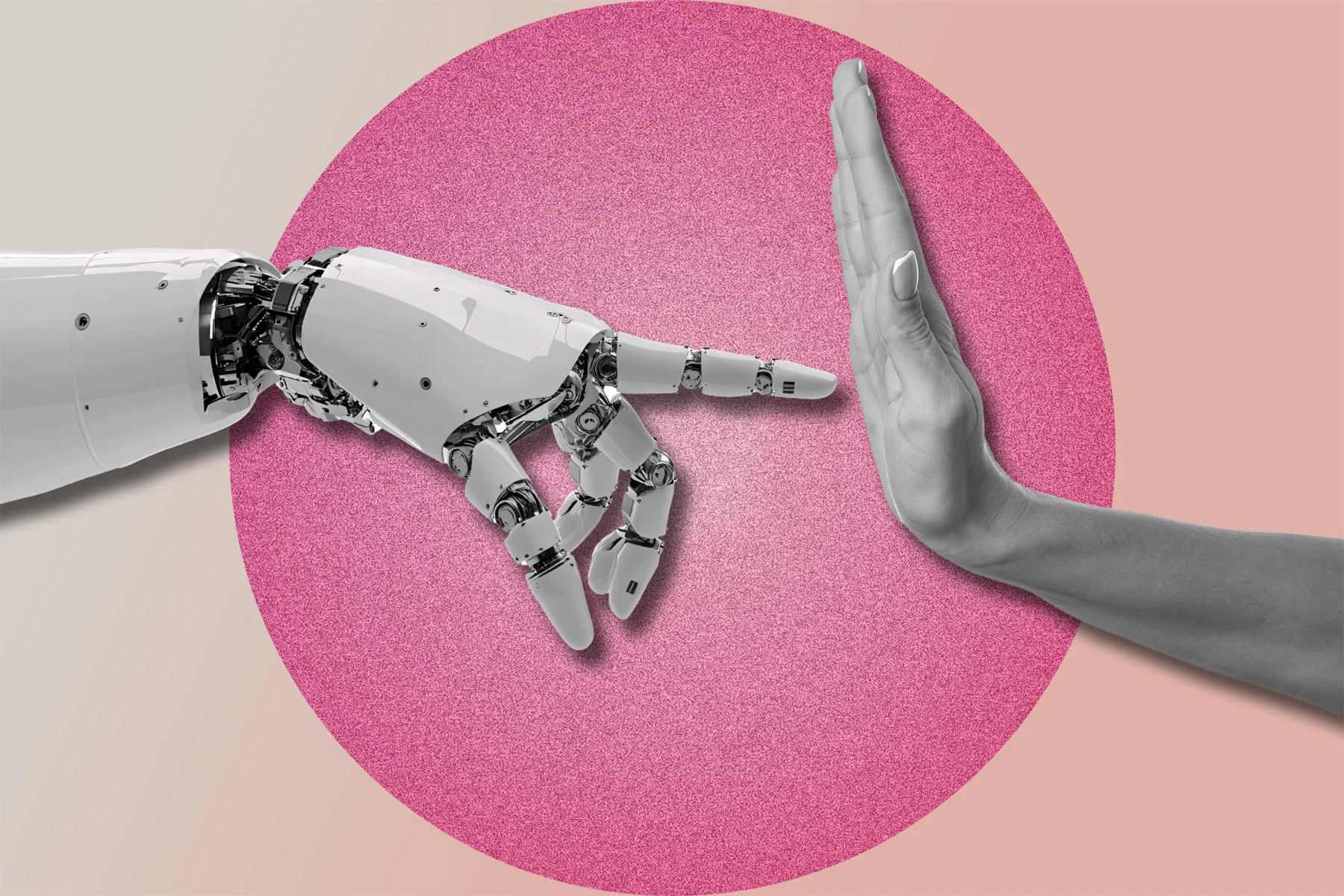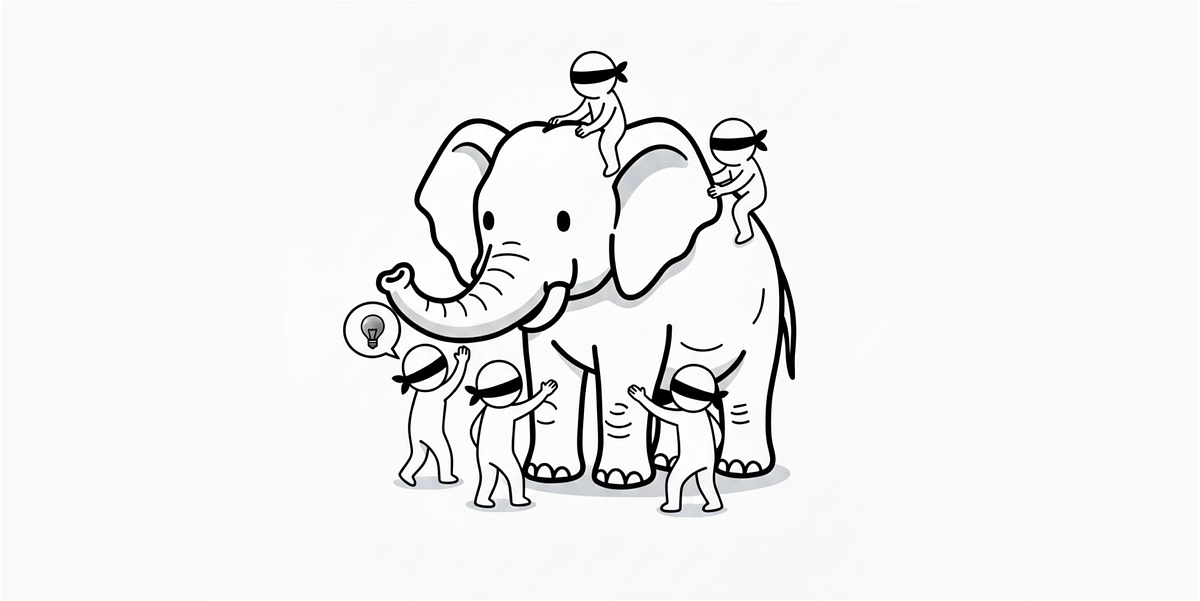This week's best things

We've had quite a lot of snow this week, so we went sliding down the hill near our house and found a snowman. A snowy landscape is a wonderful thing.
We're off to my favourite sauna on the west coast on Sunday. Blekets Bastu is like a little hobbit house perched on the side of a cliff, with a turf roof, wood-fired sauna, and a giant window looking out over the sea.
Ok, here are some good things.
The Fundamentals Problem
Shared with me by Mathew Wilson - in this piece, Christopher Butler talks about the problems that start to emerge as the tools able to create superficially competent digital/design outputs becomes increasingly widespread and easy to use.
"I asked them a simple question: “What do you want the people who land on this page to do?”
They had a hard time answering. After some discussion, they eventually came to a consensus. The problem was that none of the calls to action crowding the page would lead to the outcome they had settled upon. This is because they had not asked themselves this question before creating the page. When you don’t let strategy shape how you use a tool, the tool becomes the strategy. The result was a page with confused and unclear objectives, and a design that was impossible to scan and respond to."

'Mapping your conditions' workshop pilot
Digital projects often struggle and deliver less than expected because the organisational conditions around them have not been examined and understood early or clearly enough. Things like capacity pressures, fixed commitments, structural constraints, and decision-making norms all shape whether a project moves smoothly or gets stuck.
I am piloting a new workshop format that helps teams map those conditions more clearly. The session will give you a shared view of the realities that will support your work, the pressures that may slow it down, and the small changes that can be made before you begin.
This approach builds on my experience supporting complex digital projects with a lot of cultural organisations, alongside insights from this year's Beyond the Promise research.
By the end of the session, my aim is that you and your team will have:
- A clear conditions map that captures and describes the actual factors shaping your project
- A set of evidence-based reality statements you can use in planning conversations
- A short list of changes (that you can actual do something about) that will improve the project environment
- Individual commitments to help the work start in a healthier place
I am offering a reduced pilot rate while I refine the format with a small number of organisations.
If you are planning a digital project next year and this feels like it could be useful for your team, then get in touch (just reply to this email or drop me a note at [email protected]).
Royal Albert Hall rebrand
I quite like the 'Victorian musichall' vibe of the outdoor applications.
"The new masthead design is built directly from the architecture and cultural legacy of the Hall itself. Letterforms reference hand-drawn Victorian typography, balanced with subtle nods to the bold poster graphics of the 1960s and 70s. The result is a wordmark that feels timeless and commanding, equally at home on a program for a ballet as on a poster for a rock concert."

You Can’t Future-Proof by Playing It Safe: Lessons from the Philadelphia Art Museum Rebrand
In seemingly less straightforward rebrand project news - The Philadelphia Art Museum has introduced a rebrand that, most notably, shortens its name, as well as introducing a load of new visual identity stuff.
The rebrand has drawn what might be described as "mixed" reactions and the CEO who oversaw the project was dismissed by the board shortly before the launch...
Anyway, this piece in Print Mag is an assessment of the design merits of the work, as well making the case for why museums shouldn't be trying to play it safe when it comes to this stuff.
"And that’s what makes the backlash so ironic. Critics calling the design “too aggressive” or “too corporate” miss the point: this isn’t aggression, it’s assertion. A museum that has long stood as a fortress of culture is finally speaking in a tone that can be heard beyond its marble steps. The typography becomes the connective tissue between legacy and immediacy, proof that heritage and boldness aren’t opposites; they’re partners."

Introducing the Careful Consequence Check
A useful new checklist from the folks at Careful Industries to guide your thinking around the procurement of AI tools.
"The Careful Consequence Check can be used to make a rapid assessment of the potential risks and issues involved in using or adopting an AI-powered product, feature, or service. It’s not a substitute for a full risk analysis – it’s meant to answer the question, “is this okay?” and be the start of a process of enquiry, learning and monitoring. "

How “Surface Acting” Drains Leaders—and How to Break the Cycle
I have had 1:1 conversations with a small group of cultural leaders over the last few weeks to talk about decision-making, and the context in which those decisions are made.
This HBR article feels highly relevant. Leaders seem to be running on empty.
"It’s Wednesday afternoon and you’re halfway through another exhausting day of putting out fires, slogging through endless meetings, and handling personnel issues you wish you didn’t have to deal with. The time comes for your next team meeting, where you are expected to introduce a new company cost-cutting initiative. You have your own doubts but need to deliver the missive to your team. With your emotional gas tank running low, you can only manage a feigned enthusiasm while bombarded with questions about the implications of the new policy. Your half-hearted performance fails to inspire or create any genuine connection, meaning that Thursday morning rolls around and you’re running on empty. With nothing left in your tank, you limp through the day trying to hide your frustration and forcing a smile when necessary, starting the cycle all over again."

Curating Connection: Transforming visitor engagement in the cultural sector
The smart people at digital agency, manifesto have done some useful-looking research into what visitors are looking for when it comes to cultural experience.
The report identifies that experiences which exceed expectations drive both repeat visits and recommendations, yet most organisations still struggle to deliver consistently because internal systems, culture, and decision-making are misaligned:
“The visitor experience is a mirror of the internal experience. When internal
operations are fragmented, external experiences feel fragmented too”

How to Personalise User Experiences and Recommendations
You hear a lot about how effective personalisation is, but it's really difficult to do well.
Peter Ramsey has written a useful case study, looking at how Nike takes an effective approach to this idea.
"From personalised greetings to recommended content, personalisation is everywhere. The problem is that it often doesn't work.
In this case study, I'll explain why most of the attempts you'll see don't work at all.
And then I'll show you a few tricks that Nike uses to make their recommendations feel really personal."

Women Are Avoiding AI. Will Their Careers Suffer?
Some research that looks at the gender gap when it comes to the adoption of AI tools.
"new research reveals that women are significantly more reluctant to use the technology than men.
“There is always a stark gender disparity hiding in the back of these papers,” says Harvard Business School Associate Professor Rembrand Koning, who has also noticed that fewer women use the generative AI tools that he and his colleagues at the Digital Data Design Institute at Harvard have created for entrepreneurs around the world.
In fact, Koning’s research shows women are adopting AI tools at a 25 percent lower rate than men on average “despite the fact that it seems the benefits of AI would apply equally to men and women,” he says.
Why? In many cases, the research suggests women are concerned about the ethics of using the tools and may fear they will be judged harshly in the workplace for relying on them"
Following on from this research is a good piece from Felicity Wild which examines the context, root causes, and possible solutions to this.
"Women are judged more harshly for using AI that was built with bias against them. In turn they use it less, even as they're most likely to lose their jobs to it. And least likely to be building the systems replacing them.
If you're a woman reading this, you will not be shocked. Because you'll have lived some version of being damned if you do and damned if you don't. I've got an 18 month old toddler, so have fresh experience of the many variations of this paradox tied to motherhood."

Clouds, clocks, and the nature of digital problems
A thing from me about different types of problem, and the danger of misdiagnosis.
"In a mentoring session last week, I shared an idea that seemed to click - the difference between technical and adaptive problems.
This framing is taken from Ronald Heifetz’s work on adaptive leadership, and it explains a lot about why some digital challenges respond well to expertise and others don’t.
- 'Technical' problems (note: these are not technological problems) are well-defined: the issue is clear, the solution exists, and someone with the right skills can fix it (e.g. "our CRM doesn’t integrate with the website"). They’re (generally) easier to identify and lend themselves to 'obvious' solutions.
- Adaptive problems are messy: they involve people, habits, and culture. The problem itself is often fuzzy, and progress depends on learning and alignment rather than implementation (e.g. "we don’t use our CRM because no one trusts the data or sees the value"). These are harder to identify, often denied, and need exploration, engagement, and experimentation."

Why content strategies fail and what to do instead
And on a somewhat related note, I saw this piece from Rich Prowse on content strategy.
"Most content strategies don’t work. Not because they’re poorly written, but because documentation alone can’t change how organisations create content.
I’ve seen it happen again and again. Teams spend months crafting a comprehensive content strategy. Leadership signs off. Everyone nods along. Then nothing changes. 6 months later, the content is just as inconsistent, siloed and as frustrating as before."

Google Arts & Culture Lab
The team at Google Arts & Culture have revamped their homepage, lots of interesting bits and pieces to explore.
I feel like I've shared Say What You See and Blob Beats before, but they are both enjoyably silly little examples - so I'll share them again.

How to tolerate annoying things
A post from clinical psychologist, Patricia E Zurita Ona. If you've ever done therapy or counselling then some of these techniques may feel familiar, but regardless - there are some useful ideas in here, because life is full of annoying things...
"Annoying experiences are a normal, inevitable part of life. So, whether you’re concerned about their cumulative impact on your wellbeing or just want to reduce the frustration you feel in the moment, there is value in learning to handle annoying things better. This is where evidence-based psychological skills are handy.
In acceptance and commitment therapy (ACT), there’s an important distinction between unavoidable pain and avoidable pain. Micro-stressors such as running late, spilling something on your shirt or receiving a curt text message represent the unavoidable pain that comes with being human. Daily hassles happen. But how you choose to respond to those moments determines whether you add to the stress. Skills grounded in ACT – which I’ll draw from in the rest of this Guide – can help you reduce the avoidable pain that often comes with aversive experiences, including common annoyances."

Casio watches from the 1990s
I found the Casio archive which shares details of their watches going back to the 1970s. The models from the 1990s are particularly...unusual.
There's one (the CMD-10) with a TV/VCR remote control, and another (the TSR-100/TSR-110) with an infrared heat sensor which, I'm sure you'll agree, sounds like vital functionality for a watch.
All of which makes this the perfect time for Jeff to say...

Last week's best things
Here are the three most popular links from last week's edition.
- Messenger (a nice browser-based game)
- A Workaholic’s Guide to Reclaiming Your Life
- Learning from other teams to inform our cinema website redesign
This week's consumption
We've been watching the Norwegian Christmas rom-com series, Hjem til jul, which is quite charming.
I've also been revisiting Boston Legal which is a) very dated (and frequently problematic), b) contains an interesting (if idiosyncratic) performance from William Shatner and c) has the most unnecessarily overbearing and funky soundtrack.
See you next week
Thanks for reading all the way to the end. Please enjoy this showcase website from Shopify which demonstrates all sorts of fancy scrolling techniques and 3d things.
To finish, a quick reminder that I'm a consultant who helps cultural organisations do better digital work.
Here are some workshops I offer.
I'm also currently working with organisations on things involving:
- user research to inform digital investment priorities,
- technical strategy,
- leadership development,
- 'critical friend' advice,
- project governance,
- mentoring,
- digital strategy,
- and digital readiness.
If it sounds like I could be useful, then let's chat.











